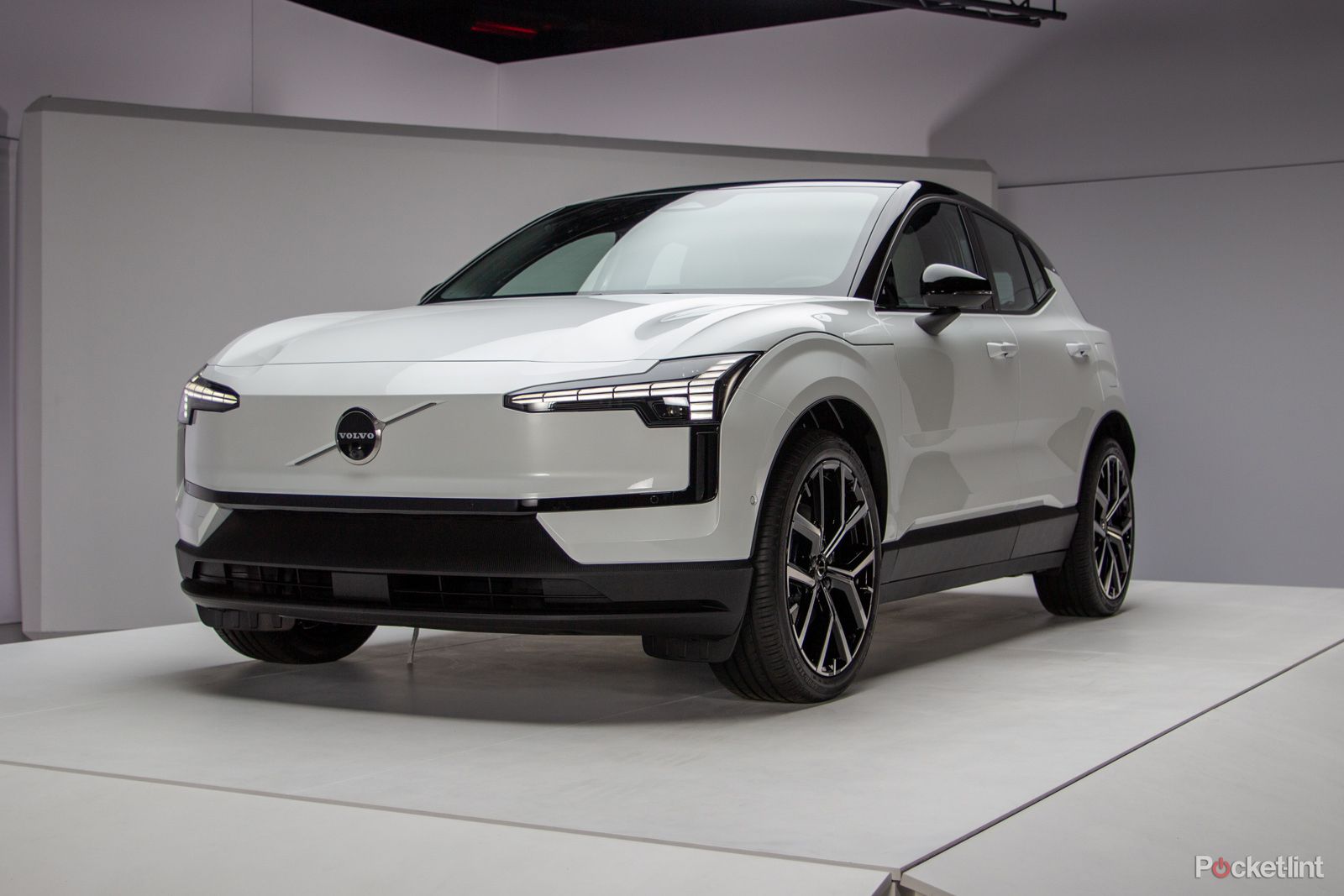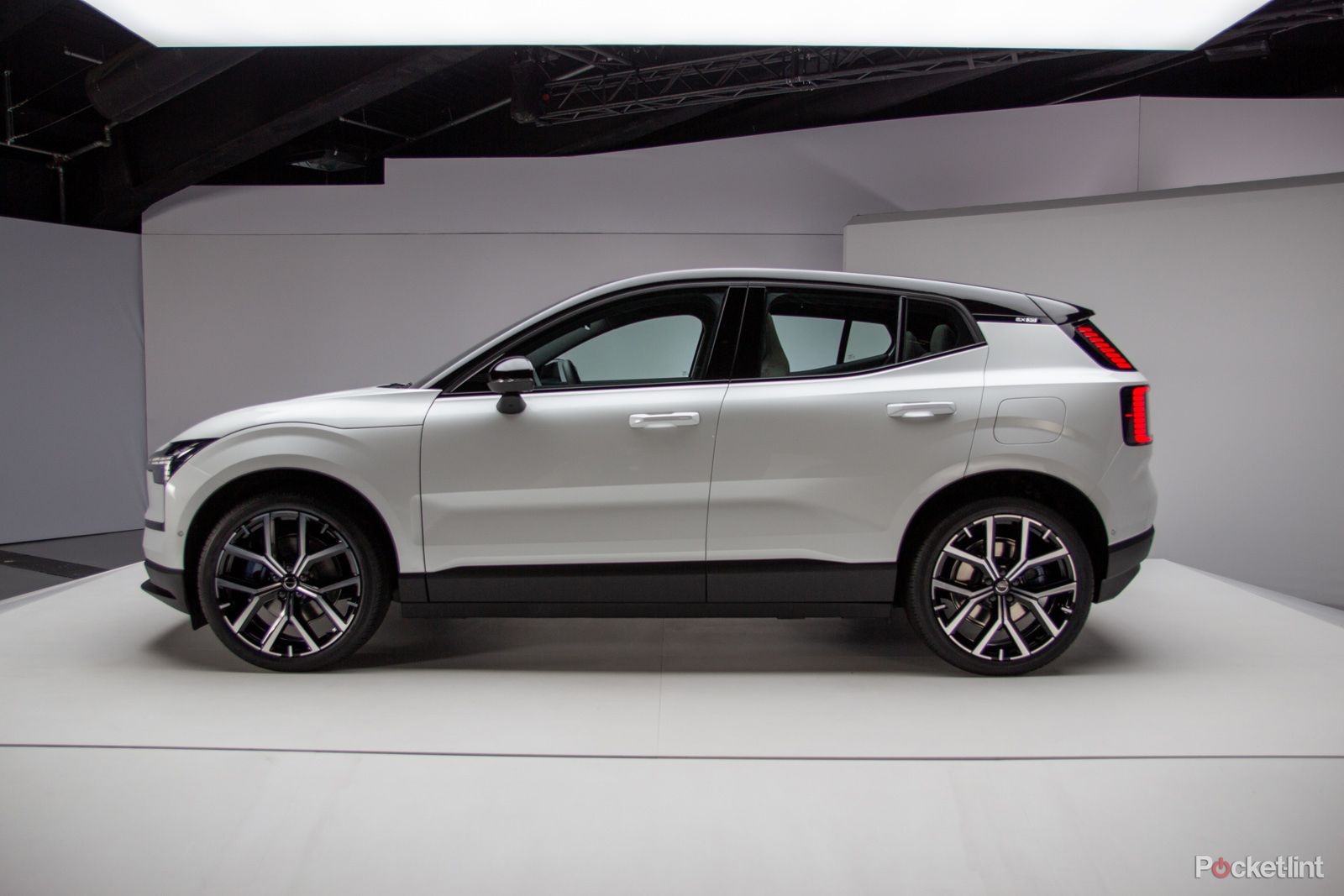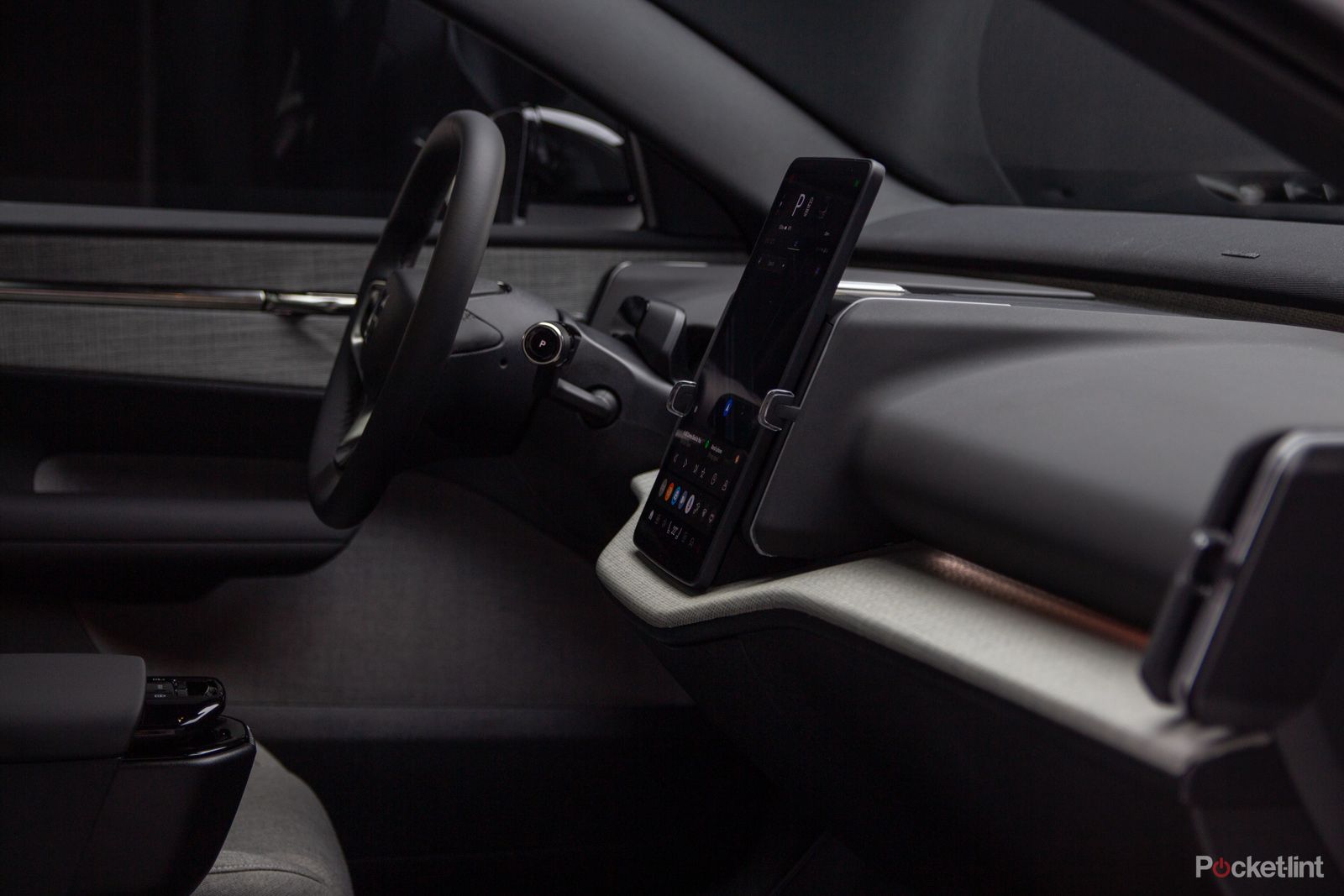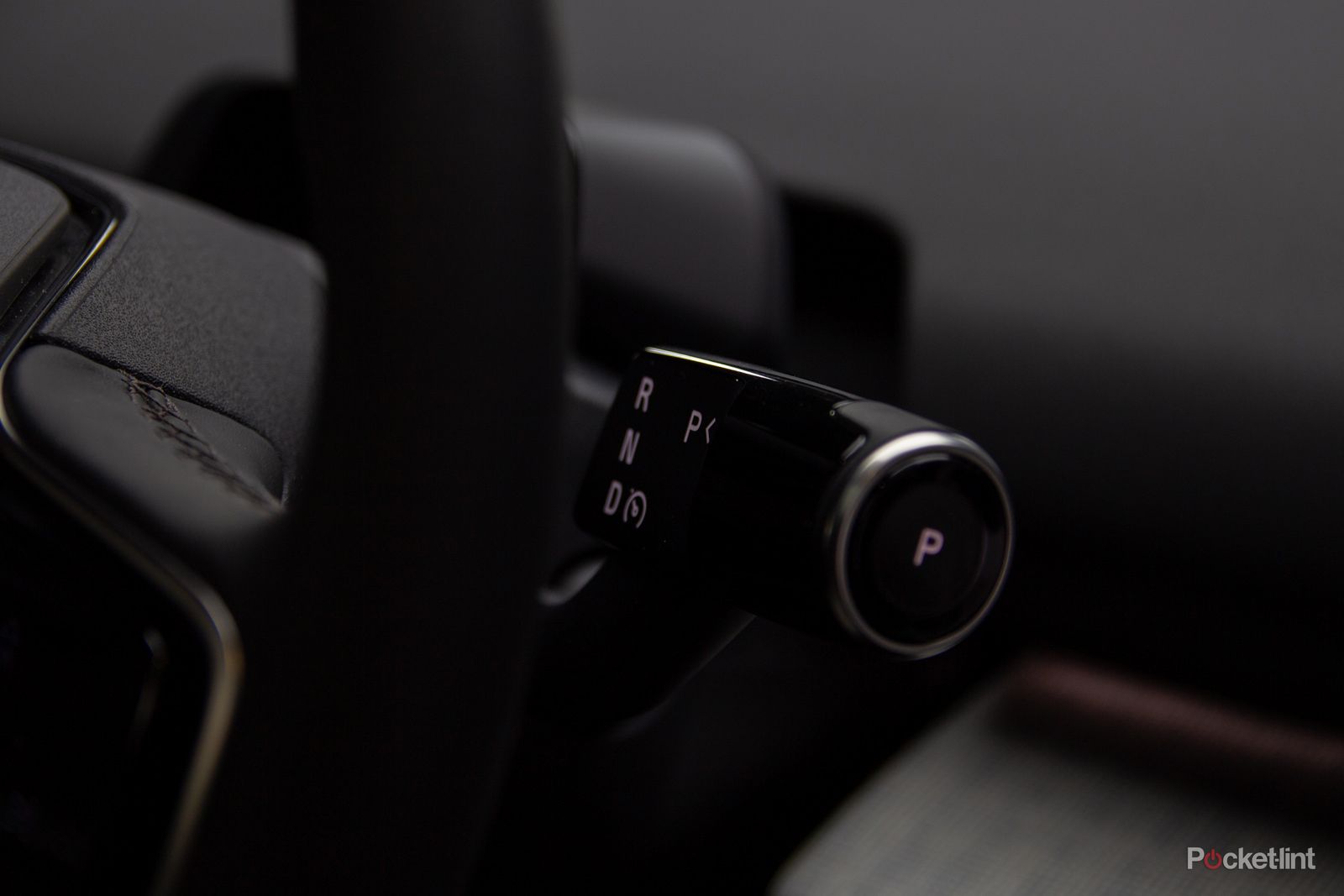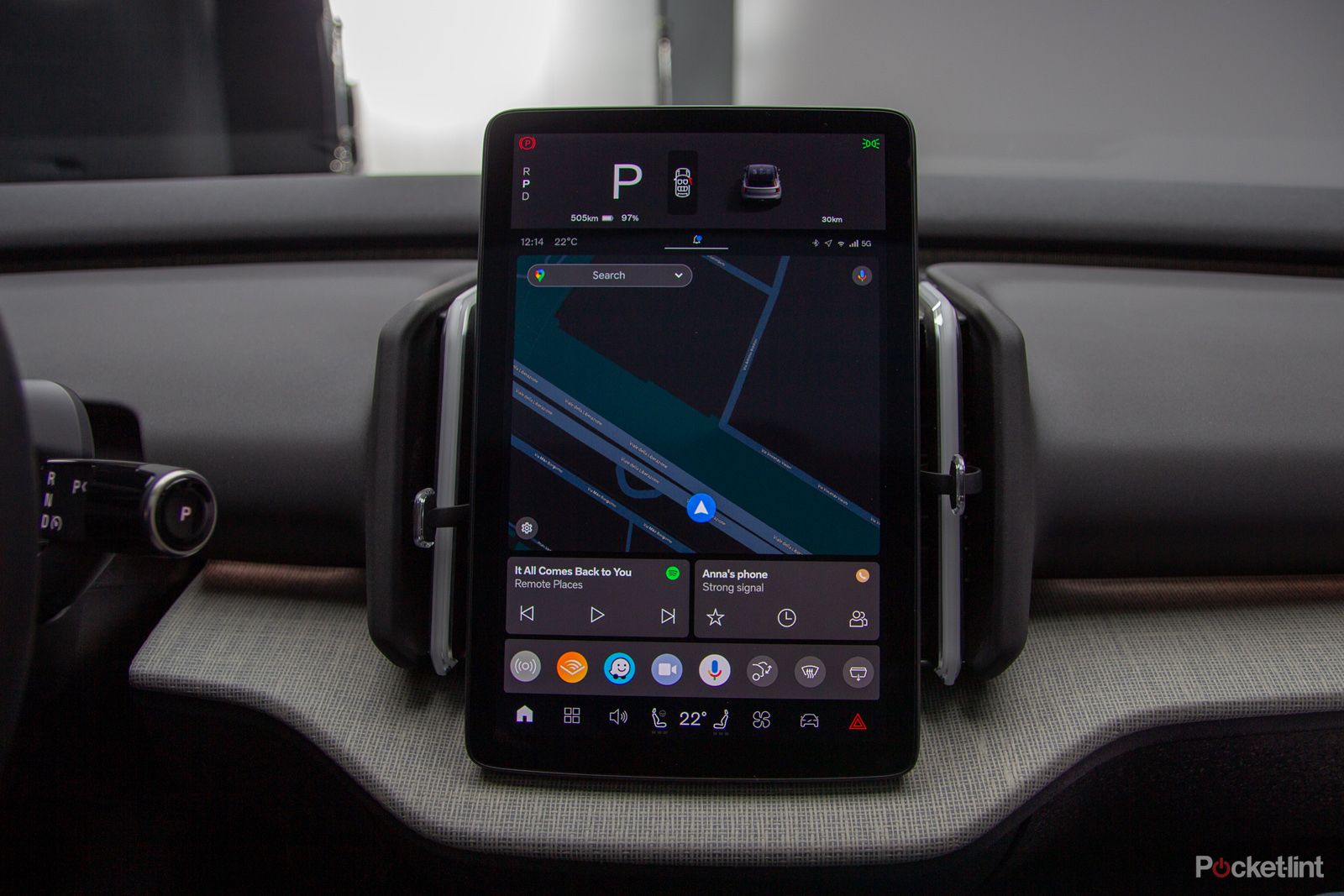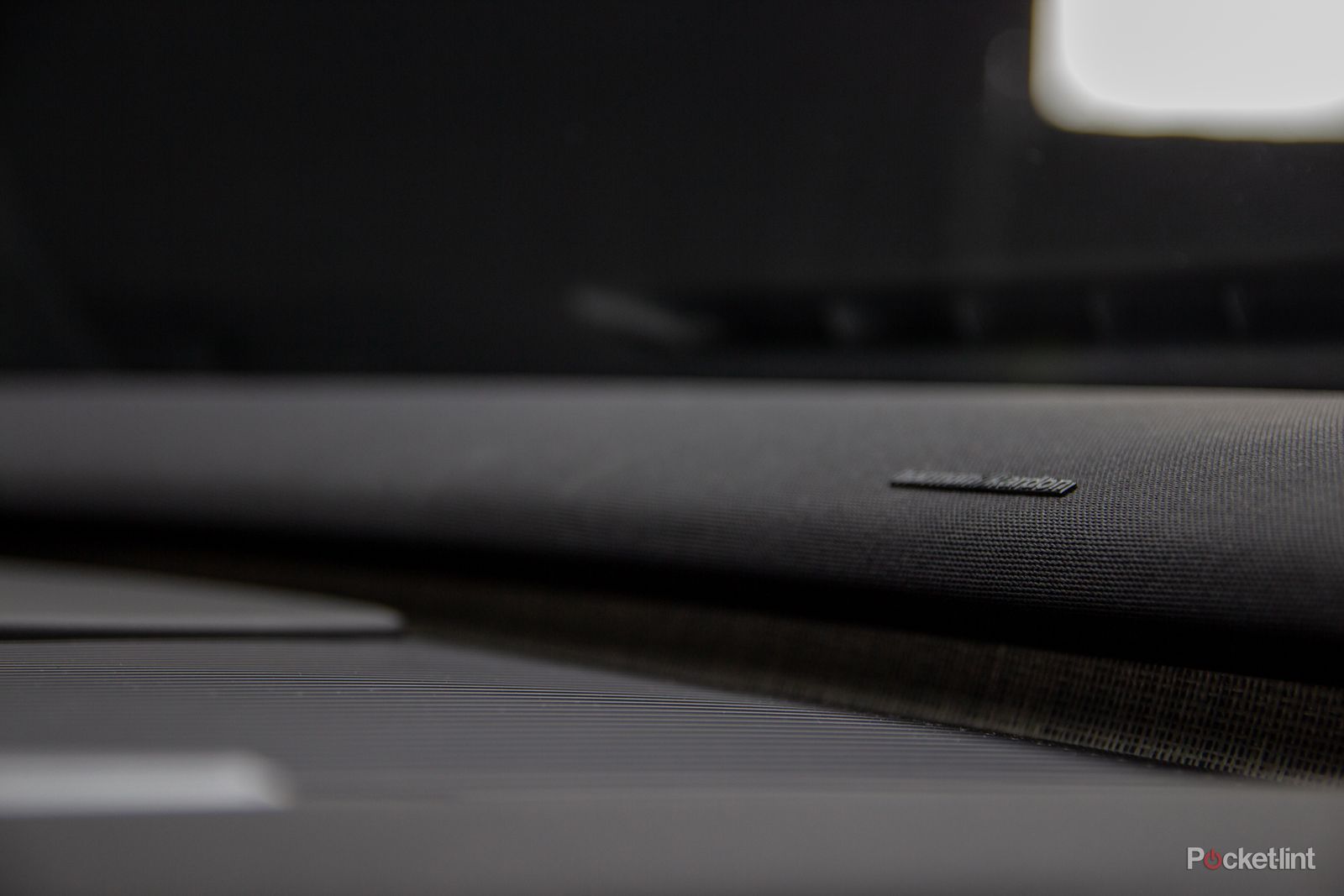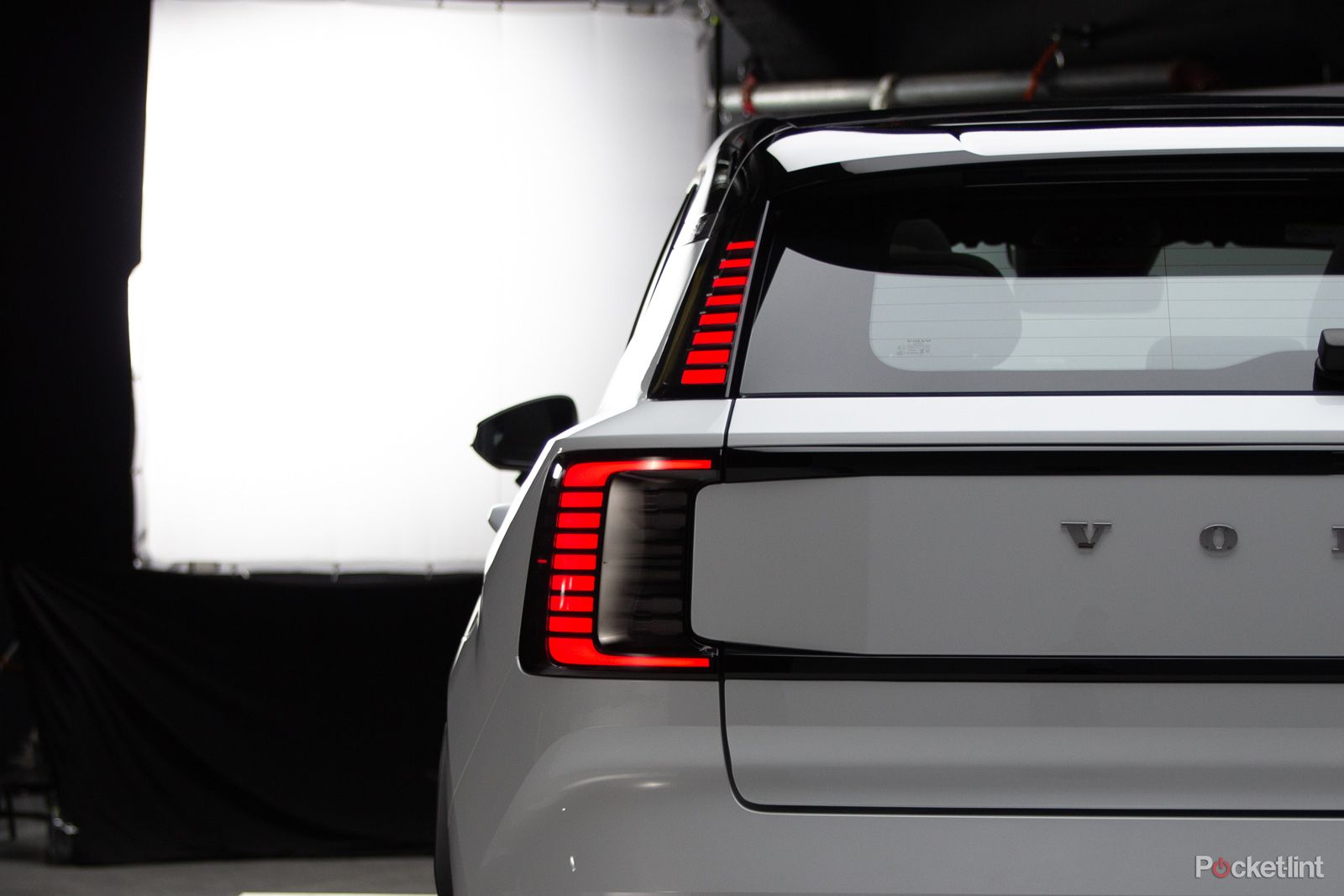Volvo's latest model takes a bold step into the future for the company. This is its smallest SUV, it's fully electric and it's designed as a disrupter. The EX30 isn't just a car, it's designed to be affordable, to make electric cars more accessible, and to provide a boost to the growing EV market.
We're going to be seeing similar moves from VW with the ID.2 and Tesla with the Model 2 (I'm guessing that name, but it seems likely), all designed to give you emission-free driving without the huge price tag. Instead, it's a focus on sensible compromise, about giving you what you need in a car, and all starting at £33,795 in the UK, $34,950 in the US, or €36,000 in the EU.
What you get from the EX30 might be simplified in some areas, but importantly you're still getting a Volvo - and that means a high quality of design and an impressive safety record. At the unveiling of this new model, it was described on stage as "an espresso shot of Volvo", which seems fitting. I was in Milan to experience the big reveal, and these are my first impressions.
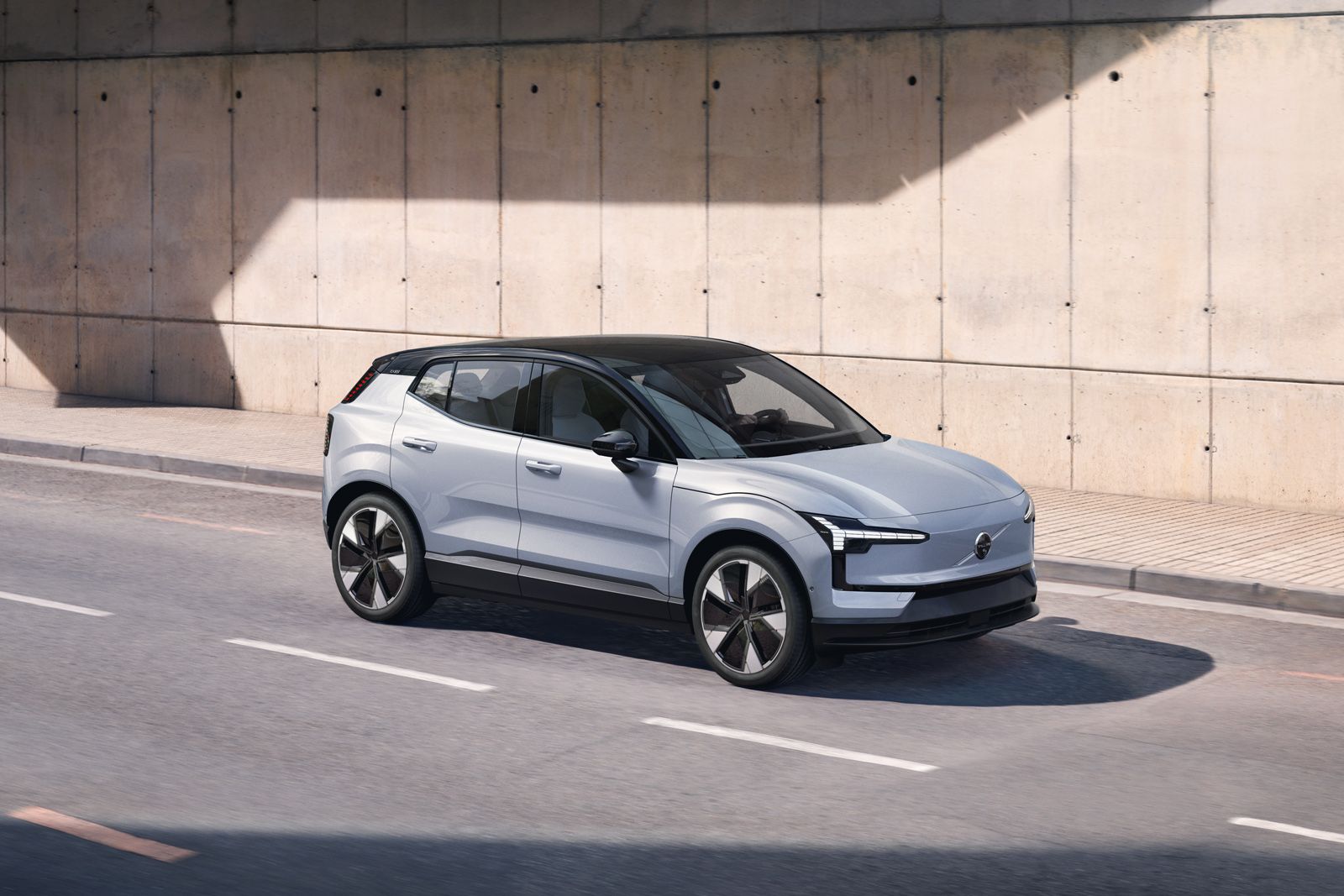
Volvo EX30
The launch of the Volvo EX30 is a big deal. This car drives into a new segment of the market, a B segment SUV that's likely to prove popular for those looking for an affordable access point to an electric car. It carries with it a lot of Volvo heritage, a great safety record and a modern and convenient tech loadout.
Design and build
If you want to produce a more affordable car, there's one easy way to do it: make it smaller, and go minimal. That's what we've seen from Tesla with the Model 3, for example, a minimalist interior that's a far cry from the lavishness of Audi or Mercedes. While Tesla's aim for the Model 3 was to be affordable, it never really got there, but Volvo seems to have picked up on that trend.
From the exterior you wouldn't know about the more minimalist interior, because this looks like a slightly smaller Volvo SUV. You can see design keys from the EX90 through the XC40 Recharge - the company's other electric models - but now down on this smaller car. It's a B segment SUV for those keeping track, and that means it's a little more compact, but still a hugely popular size for buyers.
The Thor hammer headlights lead the familial charge on the nose, the lines of the bodywork reflecting previous Volvo models, while it's exciting that there will be a Cross Country version of the EX90 in the future too, that looks a little more rugged. Volvo said that the front the car was inspired by sci-fi helmets, and there is a hint of a Star Wars First Order Stormtrooper about it.


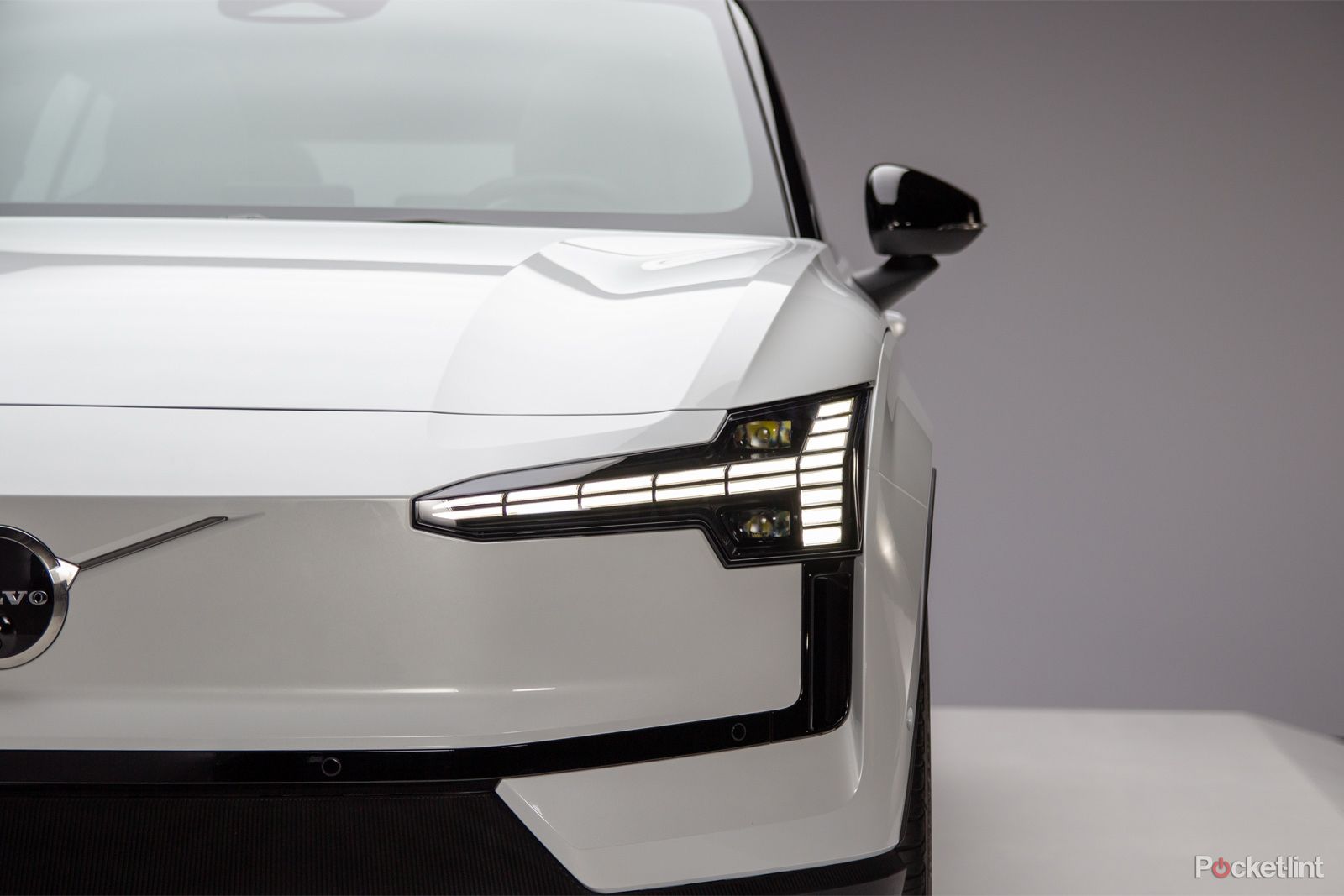

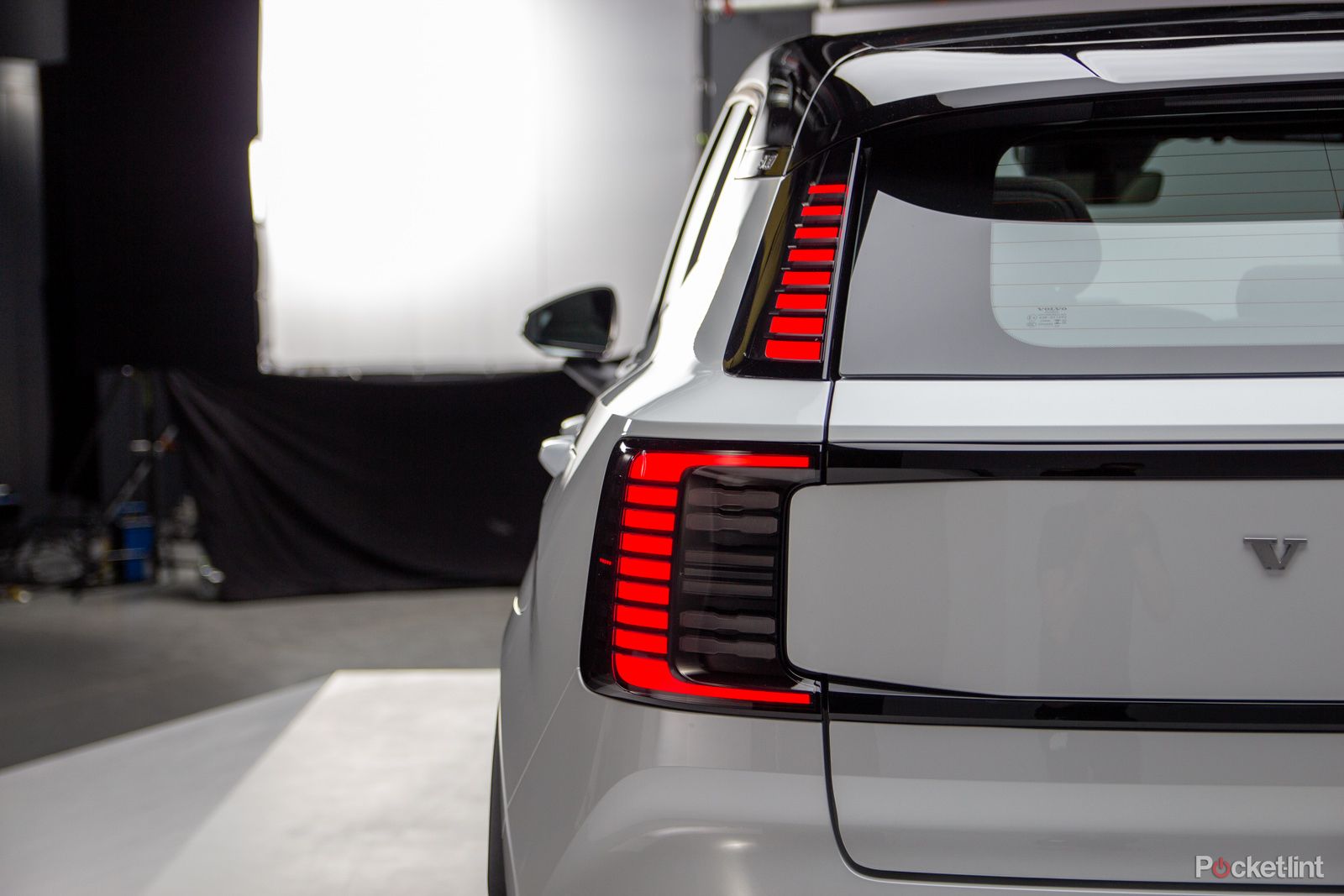
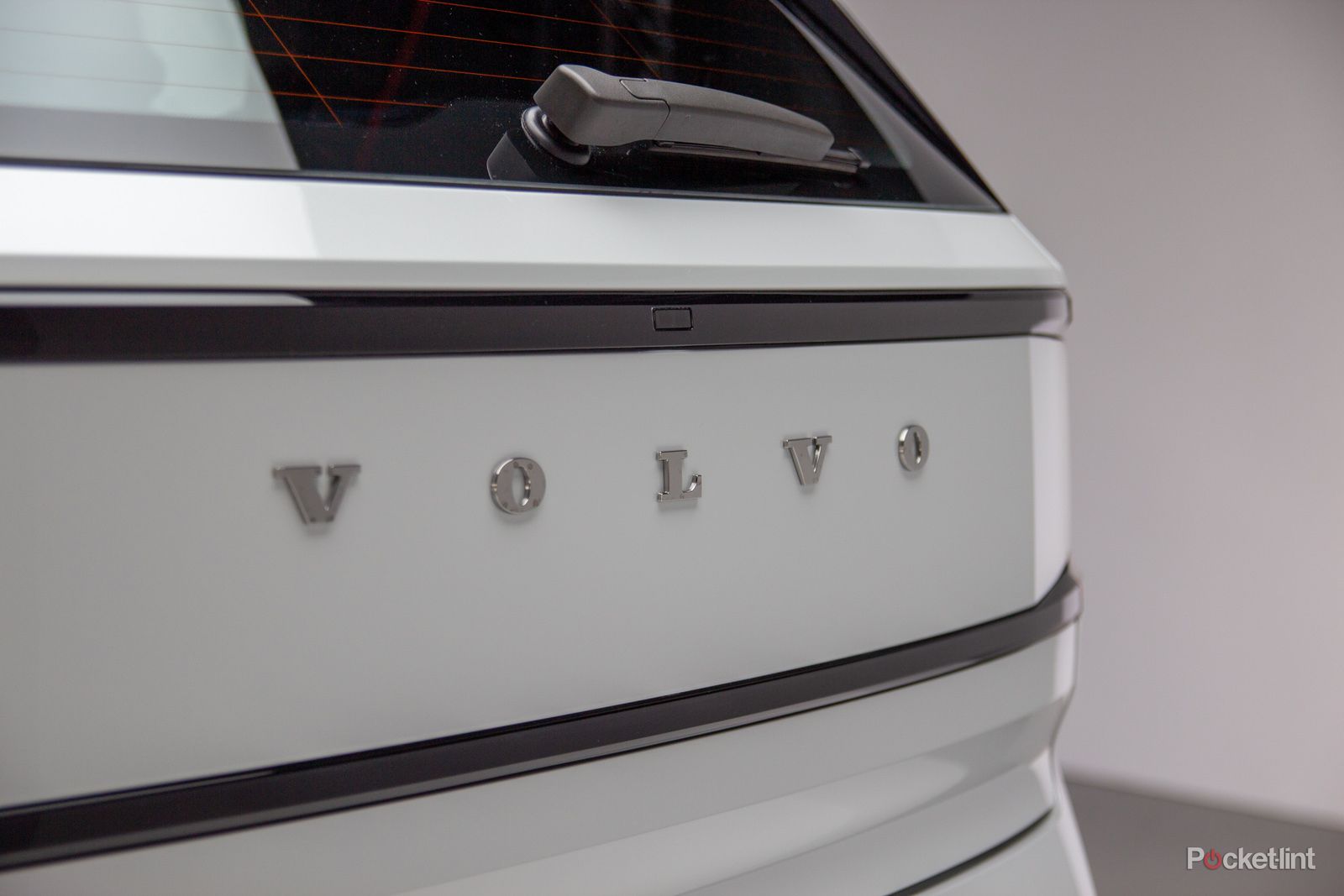
There will be two different levels of trim, called Plus and Ultra. They are basically the same from the exterior with most of the differences coming in the supporting tech features you get. But from the exterior, this just looks like a miniaturised XC40 Recharge.
A big interior design change
Volvo has used fairly minimalist interiors on recent vehicles, part of the Scandinavian design ethos. There's simplicity and elegance to the design, but Volvo is also walking a fine line - like Tesla does - between minimalism and no frills. This is evidenced by decisions such as moving the window controls to the centre of the car, leaving the doors with basically nothing on them, while the removal of the driver display again reduces the components in the car, but results in a slightly different driving experience.
Harking back to Tesla, the Volvo EX30 also uses that central display to adjust the door mirrors and the position of the steering wheel. That might be a little strange to newcomers to the car, where traditionally, there would be a button for such changes.
Placing the drive controls on a stalk on the steering column feels like a very US move: most European cars traditionally had such controls on the centre console because of the heritage of manual stick shift cars in Europe, but the growth in automatics, and more recently EVs, has been changing that. VW has an odd switch on the side of the driver display on the ID.3 for example, the Fiat 500e has push buttons; Volvo has plumped for something more conventional.
Around the cabin there's virtually no switchgear at all, you'll be using the dash-mounted display - which basically looks like an iPad - for all the controls and information, while the centre console itself can slide to be repositioned. It's not a new idea - the Hyundai Ioniq 5 has the same option, but it does mean you can redistribute the interior space slightly - and there's space underneath it too.
On the back of the seats there's now a smartphone pocket as well as the normal map pocket, but the rear bench doesn't have a lot of space. If you're packing in adults you might be a little squished, knees parted on the back seat so you'll fit in.
There's plenty of sustainable and recycled materials on the interior, such as recycled denim and recycled plastics, all aiming to drive down the environmental impact of this car. There are essentially four different finishes to the interior using colour and material combinations - and thankfully the EX30 avoids cheap-looking plastics. That sees Volvo sitting on the right side of minimalism: it's a compromise, with less just about giving you more.


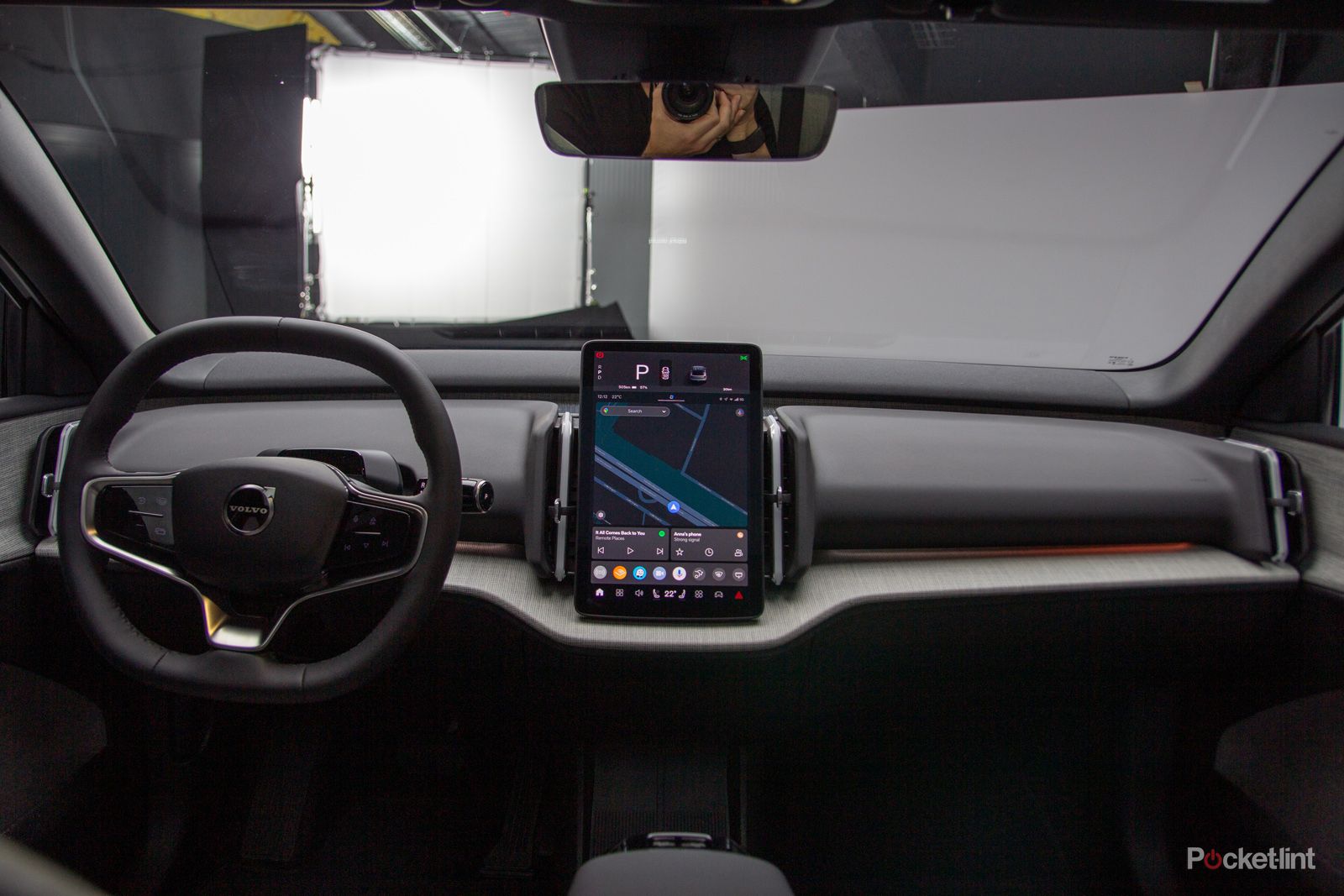
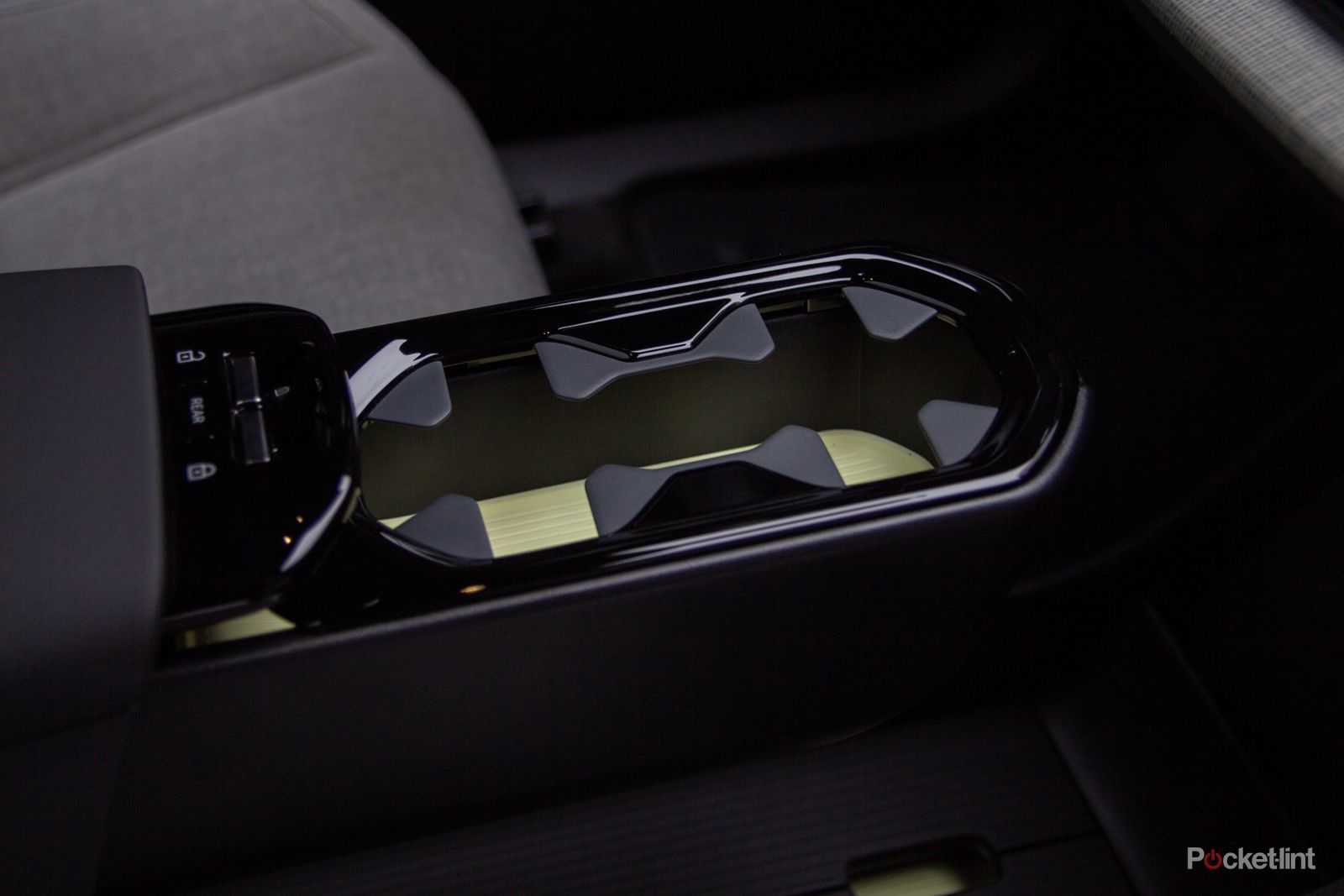
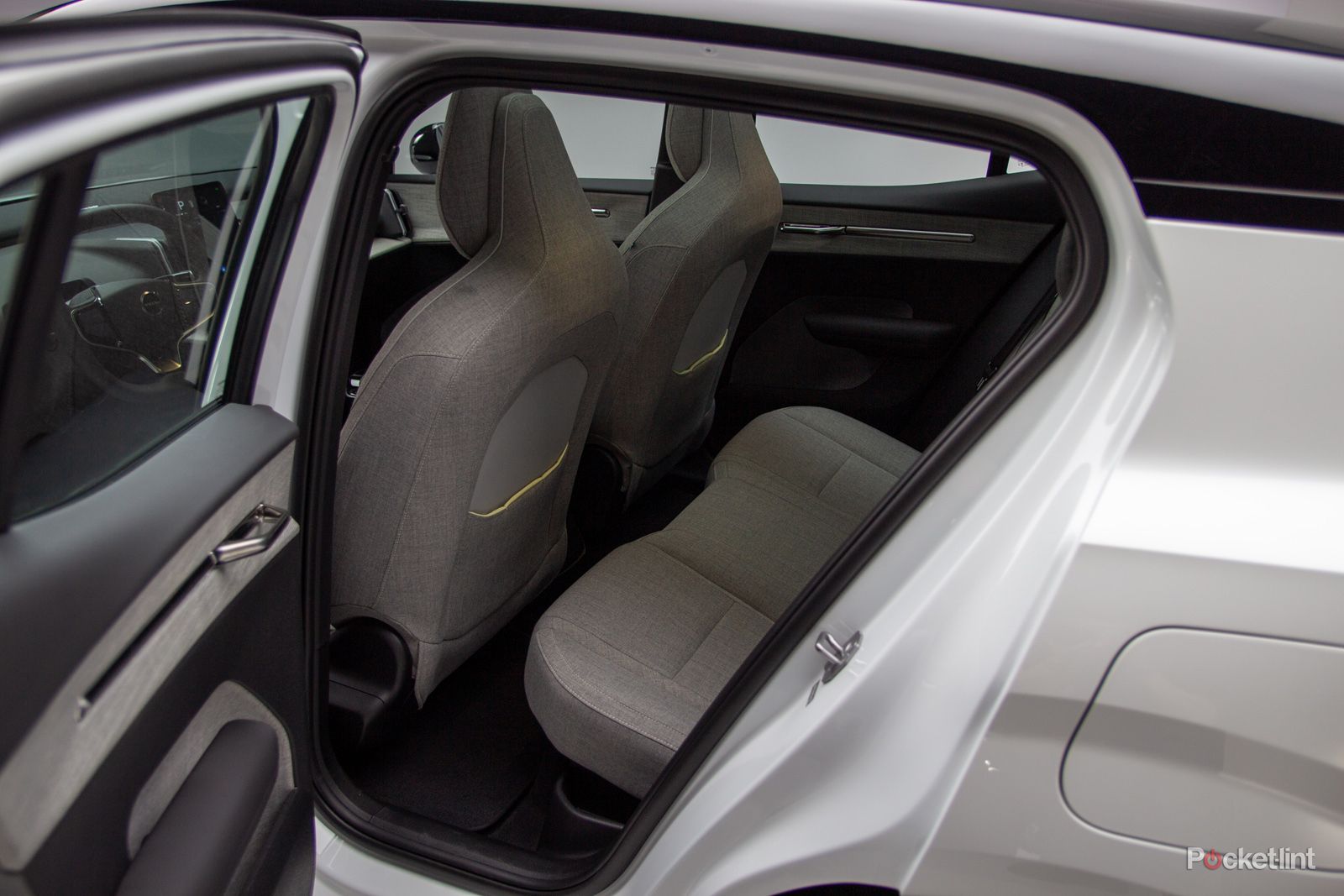
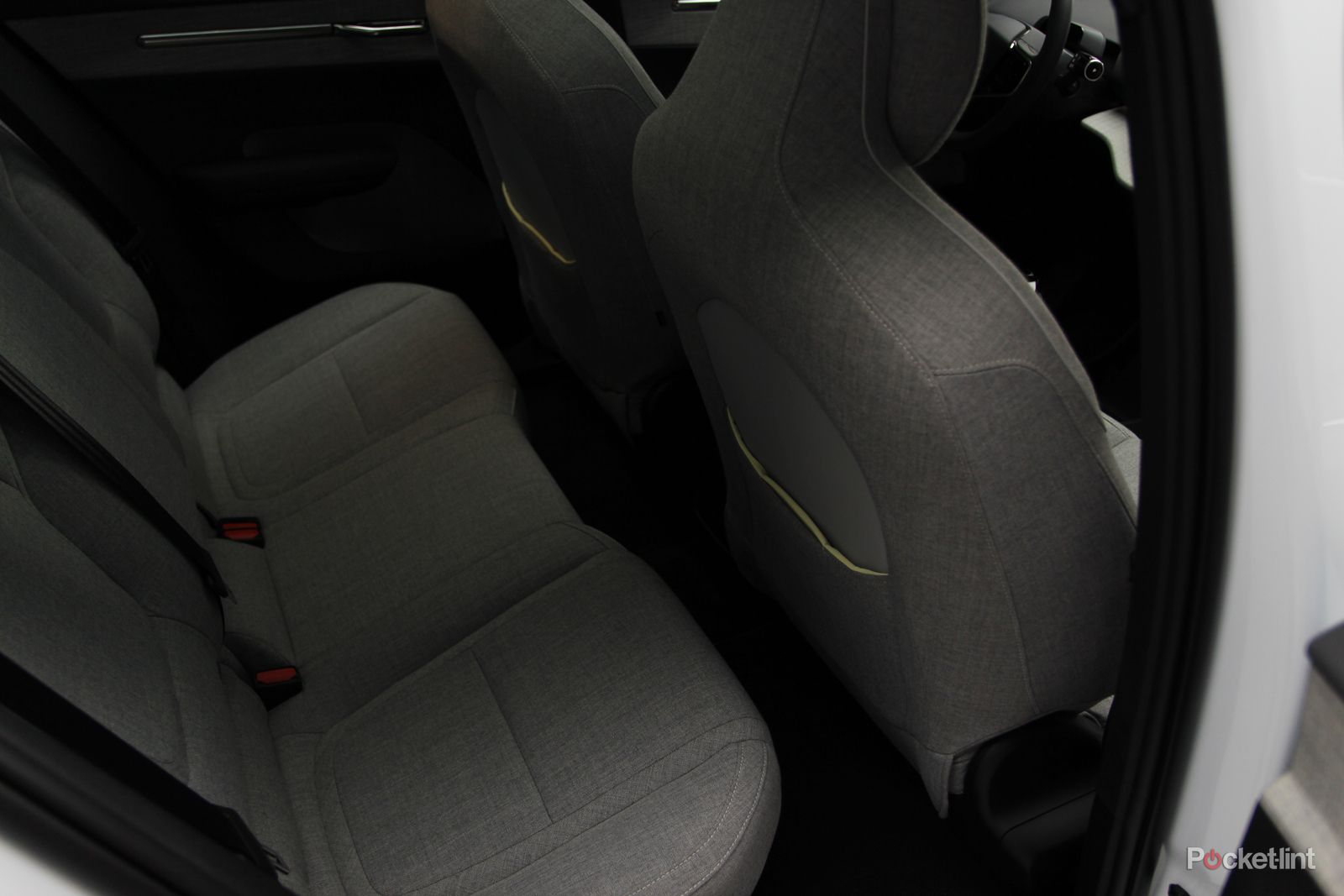
There is only 318 litres of storage space in the back. That's not huge, comparable to a hatchback, about the same size as the Kia Soul EV. The interior layout has been designed to create cabin space, and the flat floor is appreciated - and possible because the battery sits in the floor of the cabin - with the glovebox moved from its traditional location in front the passenger's knees, to the centre of the car.
The seats feel nice and comfortable, although I've only sat in the car briefly and haven't had the chance to drive the car, so I don't know how they will feel after a couple of hours. Typically, though, Volvo have nice comfortable seats and I suspect that will be the case for the EX30 too.
The interior is boosted by an ambient lighting system, designed to reflect natural scenes within the car and bringing a modern lift to the interior ambiance. There's a subtle movement to this light and there's an accompanying sound scape to go with it. Each is themed to be typically Swedish, celebrating things like the Northern Lights or Midsommar.
Volvo EX30 interior tech
As we mentioned, there's a single display on the interior of the EX30. It's a 12.3-inch display which will do everything, acting as both the driver display and the central display for the car. Volvo says this is to reduce the materials used and save space. But this can be something of an awkward arrangement, as to see any information, you have to glance into the centre of the car. Thankfully all the driving infomation is at the top of this display and it sits quite high on the dash, so it's well placed. There's no heads-up display which would get around this problem - but until we drive the EX30, we can't make a definitive judgement on it.
It's a Google-based system, so it natively runs Google's apps and services, like Google Maps. This Android Automotive arrangement is able to run Android apps, but you can still connect your phone to use Android Auto if you prefer. It will also support Apple CarPlay if you'd rather use that system, and both will connect wirelessly.
But natively you'll be able to access things like Spotify, and other common apps, with Google Maps also navigating you to the nearest charger when the battery starts to get low. Across the bottom of the display you can access things like aircon controls and the home button, while the top of the display is filled with driving information.
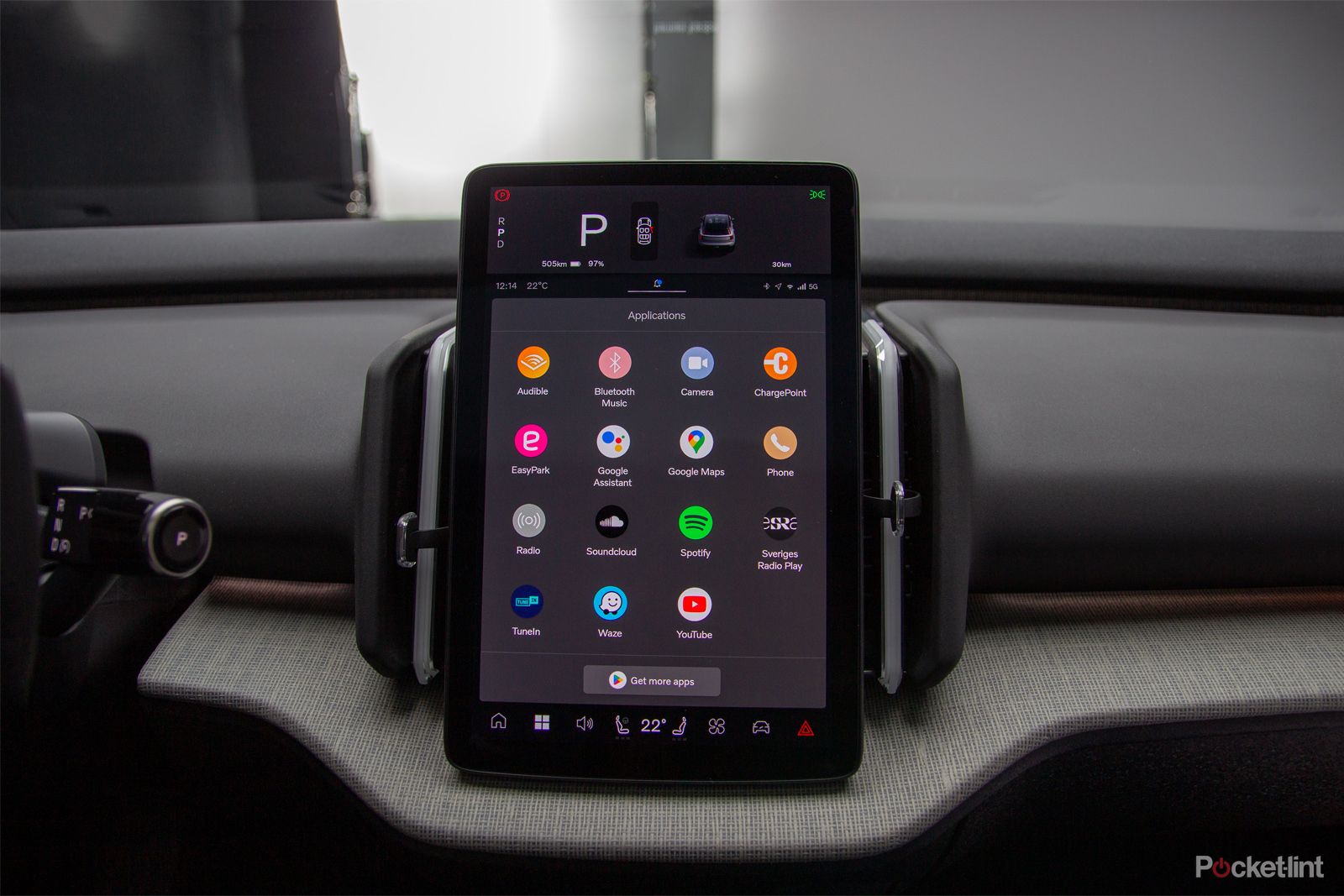
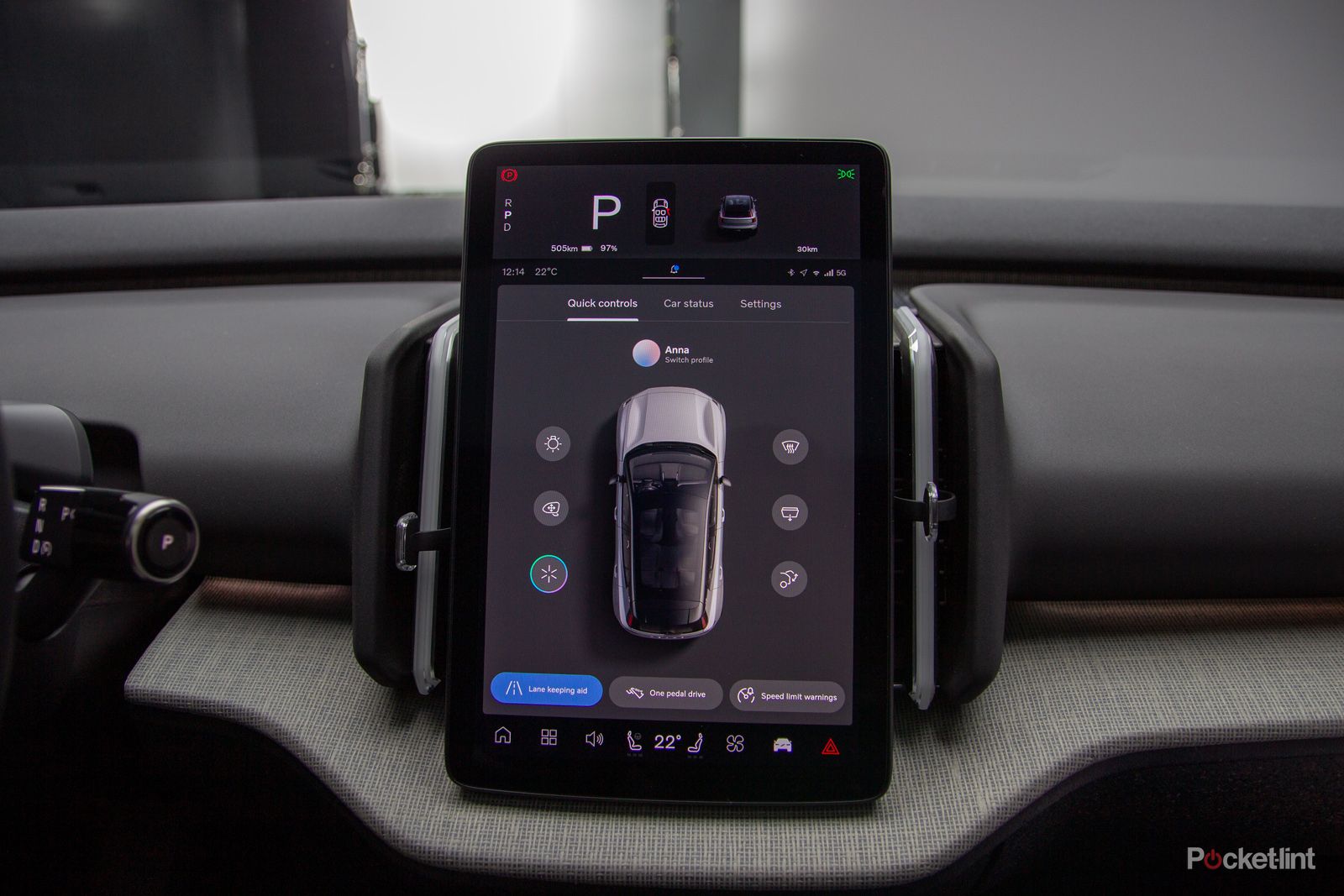
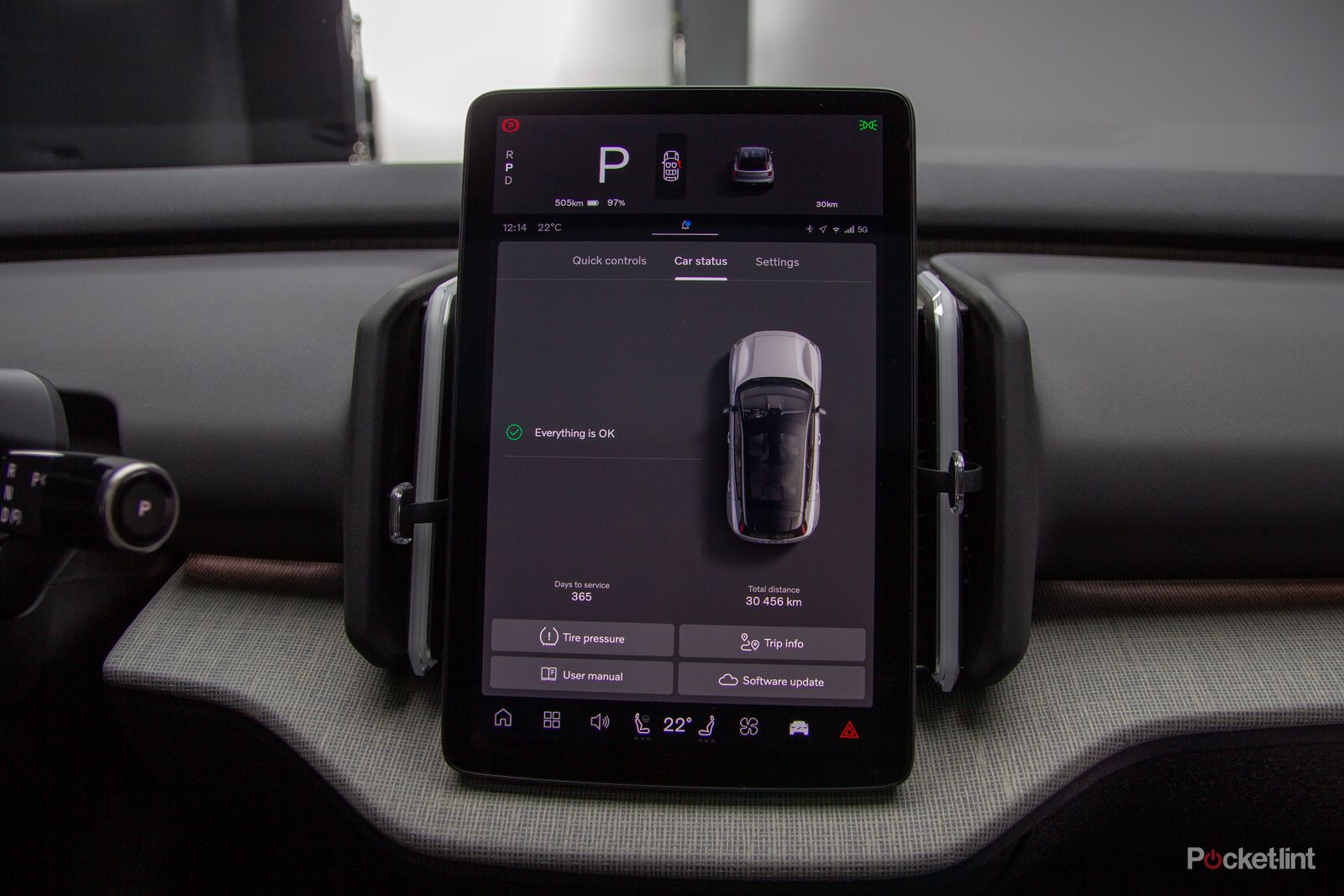

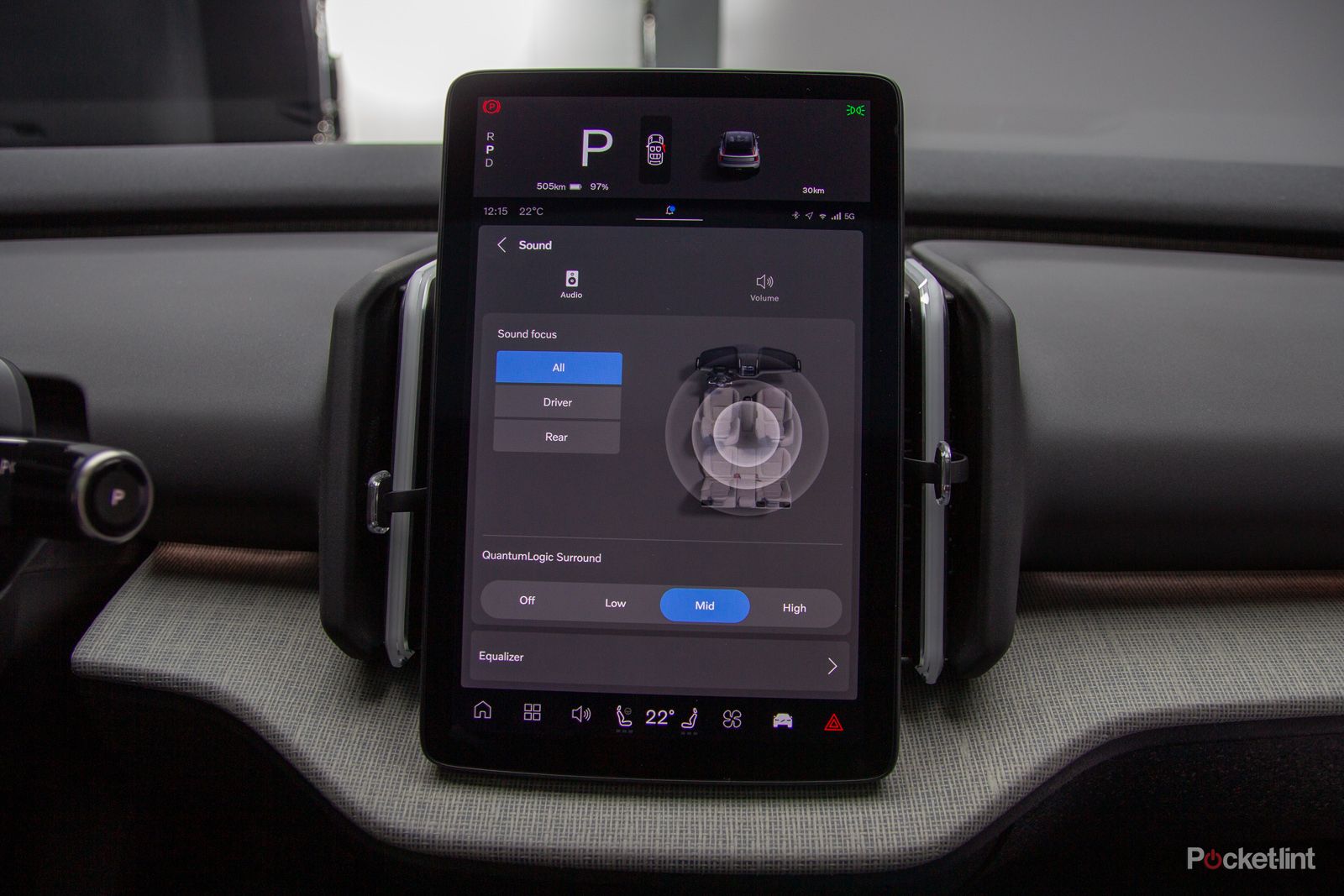
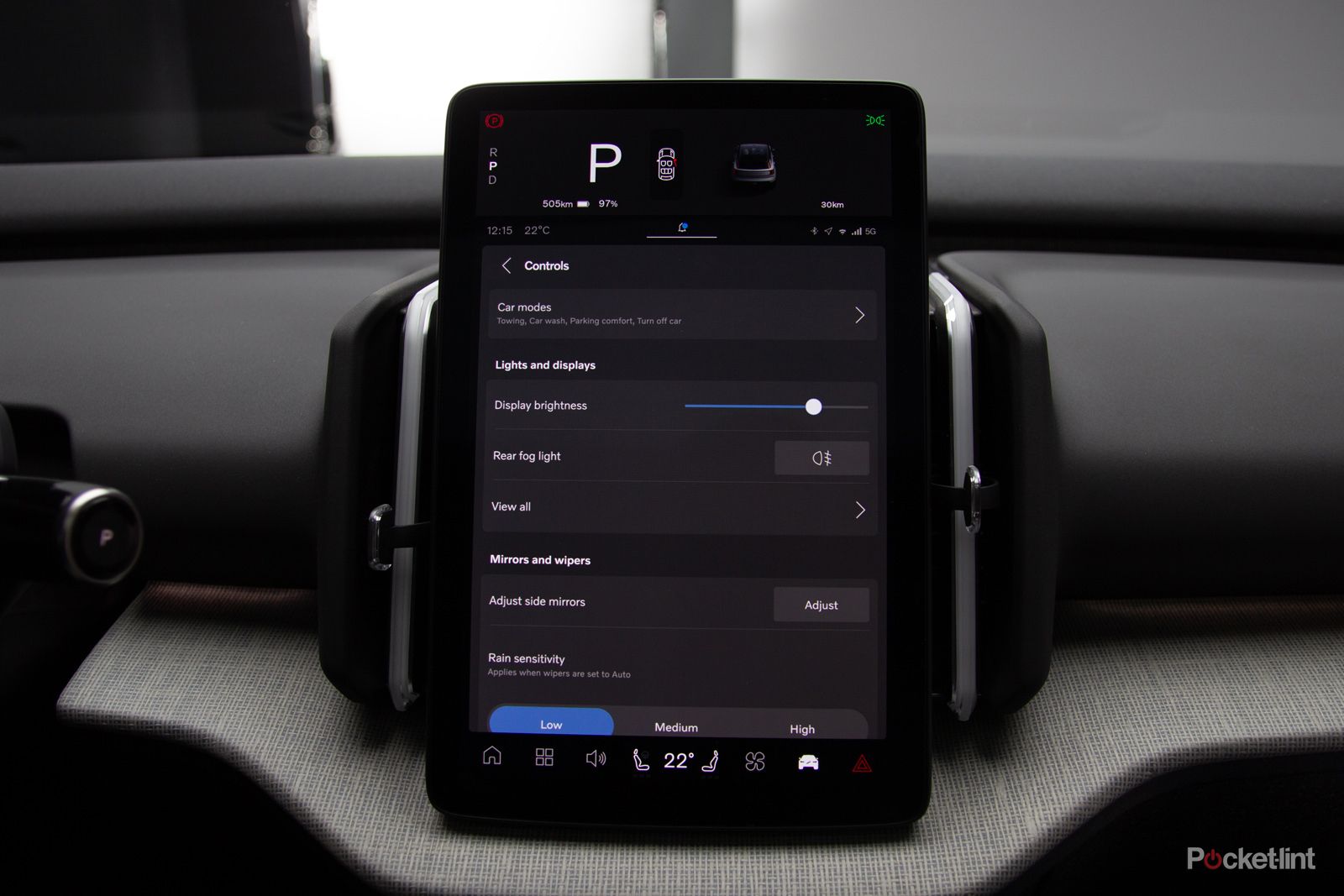
Powering the whole system is a Qualcomm Snapdragon processor, the same as found in the EX90, to keep everything slick and fast, although I've only seen it in demo mode and not out on the road to assess its full performance. There's also 5G on board so you're totally connected. That extends to the smartphone app, which supports digital keys, as well as allowing you to precondition the car, search for charging stations and so on.
Thanks to that digital key, you'll also be able to drive the car with just your phone, with to NFC and UWB - ultra wideband - meaning it will detect and recognise you, unlock the car and greet you, before letting you drive away. You'll also be able to share that key, so others can access and drive your car too.
To boost the infotainment system there's a Harman Kardon sound system, neatly packaged up like a soundbar, again removing the need for speakers in the doors and helping keep things simple. It sits beneath the windscreen, so is really cleverly integrated into the design.
Volvo EX30 power, range and battery sizes
Interestingly, Volvo is offering three different configurations of the EX30. This will allow it to target that affordable entry-level point, while also catering to what many drivers will want - and that's greater range. For those who are technically minded, it's also interesting that Volvo is offering two different battery types, with a lithium ion phosphate (LFP) battery for the smaller capacity, and an NMC battery - using nickel, cobalt and manganese - for the higher capacity. The aim here is to reduce the impact on natural resources in that LFP battery which doesn't use those rare earth elements in its chemistry.
The three options break down as follows:
- 51kWh (LFP), 272hp, 214 miles, 0-62 in 5.7 seconds
- 69kWh (NMC), 272hp, 298 miles, 0-62 in 5.3 seconds
- 69kWh (NMW), 428hp, 286 miles, 0-62 in 3.6 seconds
The first two use a single motor configuration, with the latter using a dual motor arrangement. It's worth adding that this is a pretty powerful - and at the top level makes for a seriously fast car with that 3.6 seconds for 0-62. It's a lot of power for a compact SUV, and I can't help feeling that Volvo is making something of a statement here - this is the fastest acceleration in a Volvo ever.
The entry-level model will support up to 134kW charging, while the longer range models will support 153kW charging. That will see it charge from 0-80 per cent in 26 minutes and 28 minutes respectively (remember they have different capacities, hence the similar charging time).
There's some interesting driving tech on board too, with automatic lane changing available, so you can just use the indicator and the car will change lanes when it is safe to do so, on top of a range of safety measures to keep you safe on the road.
As I've only seen the Volvo in a static state at the reveal, I can't comment on how it drives, what that power feels like or anything else - we'll be saving our driving impressions until closer to launch.
First impressions
The launch of the Volvo EX30 is a big deal. This car drives into a new segment of the market, a B segment SUV that's likely to prove popular for those looking for an affordable access point to an electric car. It carries with it a lot of Volvo heritage, a great safety record and a modern and convenient tech loadout.
But there's no avoiding that fact that it’s a little small. To the driver, you'll probably have everything you need and we suspect that will have appeal. The smaller boot will likely not be a concern as you can use the back seat for more storage, but this model doesn't undercut the XC40 Recharge, which offers more practical space for growing families.
First impressions are great, however, and I can't wait to see how it drives - especially up at the top performance level - as well as what the experience of that interior display is like. The Volvo EX30 is available to order now, with deliveries expected in early 2024 and priced from £33,795 in the UK, $34,950 in the US, or €36,000 in the EU.

